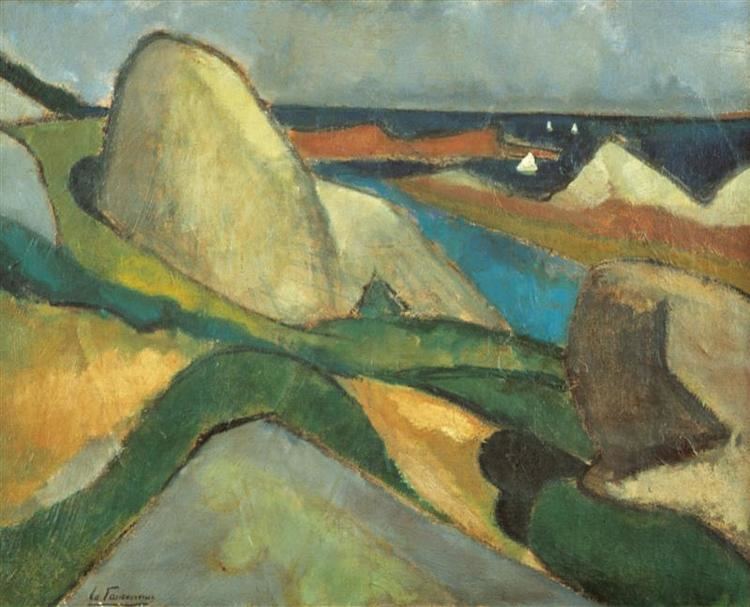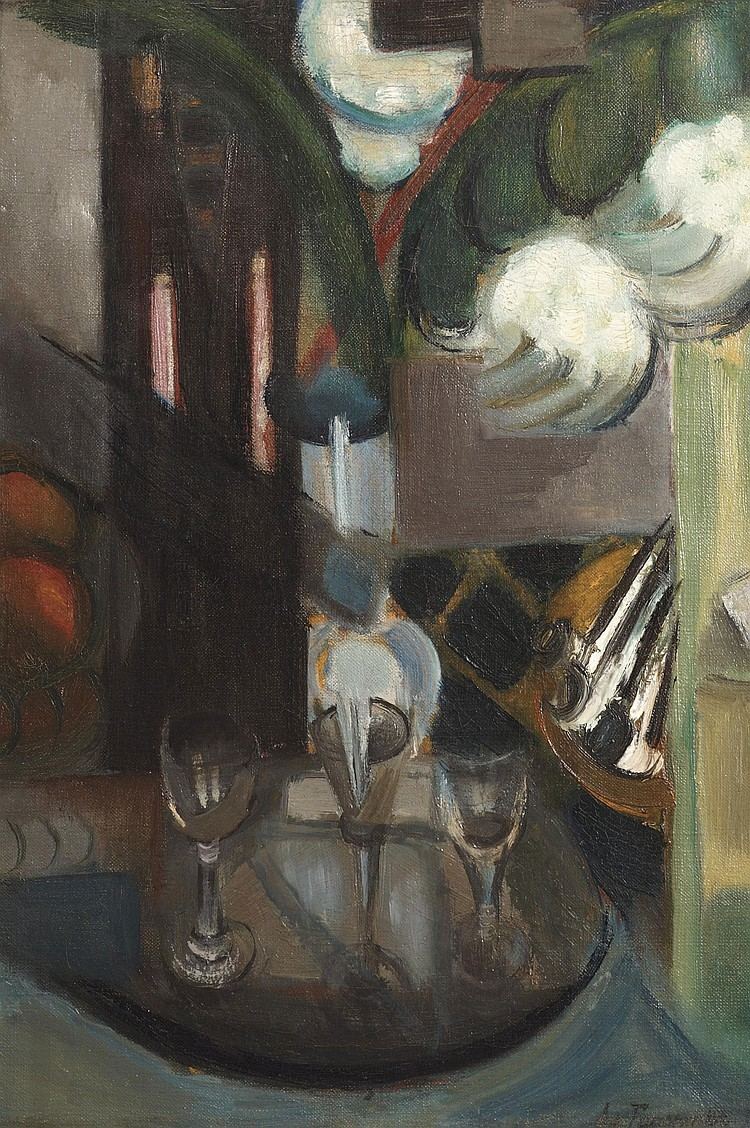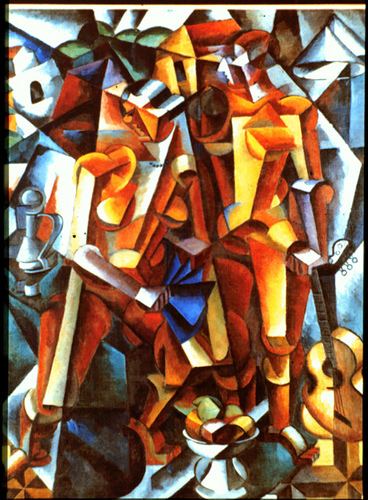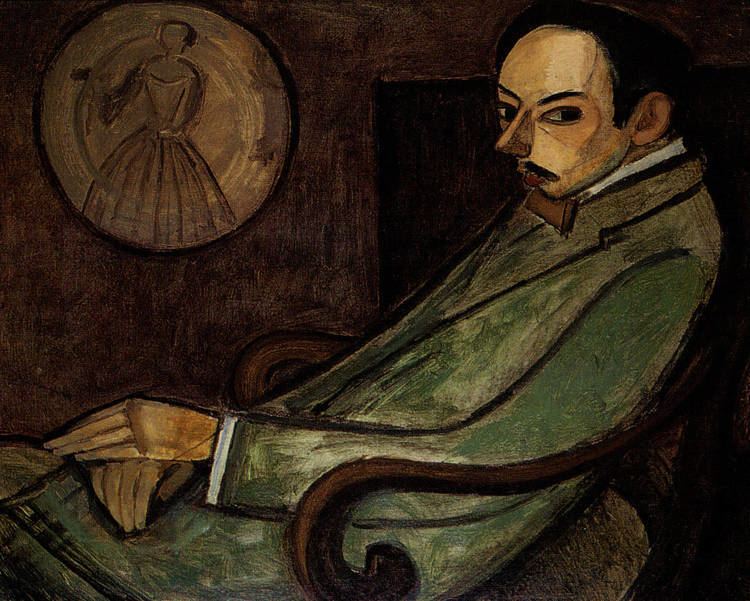Nationality French Role Artist | Known for Painting Name Henri Fauconnier Education Academie Julian | |
 | ||
Full Name Henri Victor Gabriel Le Fauconnier Artwork Abundance, Huntsman, Zealand Farmer's Wives | ||
Autoportrait 1933 henri le fauconnier 1881 1946 centre pompidou m laga spain
Henri Victor Gabriel Le Fauconnier (July 5, 1881 – December 25, 1946) was a French Cubist painter born in Hesdin. Le Fauconnier was seen as one of the leading figures among the Montparnasse Cubists. At the 1911 Salon des Independants Le Fauconnier and colleagues Jean Metzinger, Albert Gleizes, Fernand Leger and Robert Delaunay caused a scandal with their Cubist paintings. He was in contacts with many European avant-garde artists such as Wassily Kandinsky, writing a theoretical text for the catalogue of the Neue Kunstlervereinigung in Munich, of which he became a member. His paintings were exhibited in Moscow reproduced as examples of the latest art in Der Blaue Reiter Almanach (The Blue Rider Almanac).
Contents
- Autoportrait 1933 henri le fauconnier 1881 1946 centre pompidou m laga spain
- Henri Le Fauconnier 1881 1946 cubism Franch
- Career
- Works
- References

藝苑掇英 Henri Le Fauconnier 亨利·樂·福科尼耶 (1881-1946) cubism Franch
Career

In 1901 Henri Le Fauconnier moved from northern France to Paris, where he studied law, then attended painting classes in the studio of Jean-Paul Laurens, then in the Academie Julian. He changed his from Fauconnier to Le Fauconnier and exhibited at the Salon des Independants in 1904 and 1905, implementing bold colors in line with Henri Matisse. He moved to Brittany in 1907 and painted the rocky landscapes of Ploumanac'h in a proto-Cubist style characterized by chastened tones of brown and greens with thick outlines delimiting the simplified forms.
He explored a personal style and put it into practice; painting nudes or portraits (such as that of the poet Pierre Jean Jouve in 1909 (Musee National d'Art Moderne). Under the influence of Paul Cezanne he developed his own form of Cubism. Back in Paris, he mingles with the artistic and literary gathered around Paul Fort at the Closerie des Lilas in Montparnasse.
At the 1909 Salon d’Automne Le Fauconnier exhibited alongside Constantin Brancusi, Jean Metzinger and Fernand Leger.
Louis Vauxcelles, in his review of the 1910 Salon des Independants, made a passing and inaccurate reference to Le Fauconnier, Jean Metzinger, Albert Gleizes, Robert Delaunay and Fernand Leger, as "ignorant geometers, reducing the human body, the site, to pallid cubes."

Metzinger had written in 1910 of 'mobile perspective' as an interpretation of what would soon become known as "Cubism" with respect to Picasso, Braque, Delaunay and Le Fauconnier.

At the invitation of Wassily Kandinsky, Le Fauconnier published a theoretical text in the catalog of the Neue Kunstlervereinigung (Munich, 1910). He opened his Rue Visconti studio in Paris to artists eager like him to apply the lessons of Cezanne. With Jean Metzinger, Albert Gleizes, Fernand Leger, Robert Delaunay, he contributed to the Cubist scandal of the 1911 Salon des Independants. Le Fauconnier exhibited his vast Les Montagnards attaques par des ours (Mountaineers Attacked by Bears) at the Salon d'Automne of 1912 (Paris).
February 1912 Henri Le Fauconnier was appointed to succeed Jacques-Emile Blanche as chef d'atelier of the avant-garde school of art Academie de La Palette. Le Fauconnier commissioned Jean Metzinger and Andre Dunoyer de Segonzac as full-time instructors for the morning sessions; Eugeniusz Zak (Eugene Zak) and Jean Francis Auburtin took over in the afternoon.
Le Fauconnier was a contributing member of the Section d'Or (Puteaux Group).
At the outset of World War I Le Fauconnier moved to the Netherlands where he stayed for six years. His work at this time combined Cubism and Expressionism, which generated considerable success and influence in the Netherlands. He returned to France in 1920 where his paintings became more realistic.
He died of a heart attack in Paris (1946).
